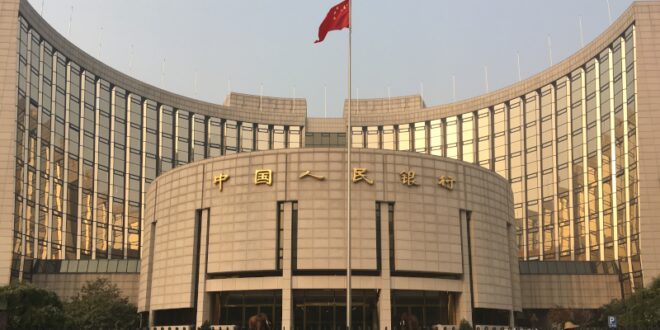On 16 March 2023, Beijing released an official plan to reform Party and state institutions. This document lays out plans to address deficiencies in the ability of the Chinese government’s own institutions to lead the nation’s development. Part of the 2023 plan is to reform and restructure the financial regulatory framework.
According to the plan, a central commission for finance will be established as the Central Committee’s own decision-making institution — designing, coordinating and overseeing the country’s efforts to achieve financial stability and development. It will replace the existing State Council’s Financial Stability and Development Committee. This is Beijing’s way of enhancing its authority over a financial sector that has become a source of turbulence in recent years.
A new national regulatory body, the National Bureau of Financial Regulation, will also be set up. It will oversee consumer rights protection and regulation of the financial industry except for the securities industry. The China Banking and Insurance Regulatory Commission will be abolished and the PBOC will focus on monetary policy and macroprudential regulation.
China’s financial regulatory framework has gone a long way from a one-regulator structure to the current one bureau, one commission and one bank structure. Before 1990, China’s financial sector consisted of a few state-owned commercial banks and the PBOC was the only financial regulator.
China’s financial industry started to change in the early 2000s as cross-sectorial financial products, such as bank wealth management products, began to emerge. This has posed challenges to the sectoral regulatory framework as these blended financial operations require supervision from more than one regulator. It also creates room for circumvention of regulation in territories where supervisory responsibilities are unclear and rent seeking in areas where supervisory responsibilities are overlapping.
In an attempt to address supervisory inefficiency, the State Council approved an inter-ministerial joint meeting system for all financial regulators to coordinate cross-sectorial regulations in 2003. This failed to achieve its goal because none of the regulatory bodies had actual executive power to lead the way.
Beijing started a major reform in 2017–18 after seeing turbulence in the stock market, real estate market and internet financing in the past few years. First, the Financial Stability and Development Commission was created under the State Council in 2017. This commission is on a higher administrative ranking than the existing regulators, which ensures that it has the executive power to mobilise others to tackle major issues and to lead financial reform. Then the Banking Regulatory Commission and the Insurance Regulatory Commission was replaced by a China Banking and Insurance Regulatory Commission in 2018.
The 2017–18 reform shows a gradual transition from sectorial regulation to functional regulation as Beijing responds to the changing financial sector. The 2023 reform is a continuation of this transition, and yet shows Beijing’s pressing concern about financial risks and desire for a stronger grip over the financial system.
The Central Commission for Finance was created in 1998, after the outbreak of the Asian financial crisis, to centralise forces to stabilise the economy and coordinate risk management. Its resurrection today suggests that Beijing’s concern over the financial system has reached the same level as during the crisis.
The 2023 plan also seeks to optimise the central bank’s structure. All the regional branches, which operate across multiple provinces, will be removed. Instead, there will be one provincial-level branch in each of the 31 provinces and five separate branches in the cities of Shenzhen, Dalian, Ningbo, Qingdao and Xiamen. It will be a better central–local structure for monetary policy implementation and macroprudential regulation.
Local financial regulatory frameworks will be modified. Central financial regulators will send out local agencies to oversee, coordinate and implement financial supervision and reform, in collaboration with local governments’ own financial regulatory bodies. Local governments are no longer responsible for promoting financial development. Rather, they have been given the clear task of reining in financial risks. It is clear that Beijing wishes to control financial supervision at the local level as much as at the national level.
The reform of the local financial regulatory framework arises from a deep concern over the scale of local government debt. In 2022, the Chinese local government’s debt reached 35 trillion RMB (US$4.8 trillion) and the local government financial vehicle (LGFV) debt was close to 60 trillion RMB (US$8.3 trillion).
Beijing has recognised the risks embedded in this multi-trillion local government debt and aims to resolve implicit LGFV debt via large-scale debt restructuring and swapping. Reform on the local financial regulatory framework will ensure that Beijing will lead the debt restructuring at the local level while making the local governments accountable for controlling financial risks.
The 2023 round of financial reform comes at an extraordinary time for the Chinese economy. The external environment is uncertain again, due to the pressure of high inflation and tightening monetary policy in advanced economies. Domestically, slow growth, accumulating systemic risk and the shrinking policy room are the biggest challenges.
Given the uncertain economic outlook, it is increasingly critical that the plan for reforming the financial regulatory framework will be implemented seriously. The National Bureau of Financial Regulation is key to this plan. On 10 May 2023, it was officially open for business — we will wait and see whether it can get the job done.
 Eurasia Press & News
Eurasia Press & News




